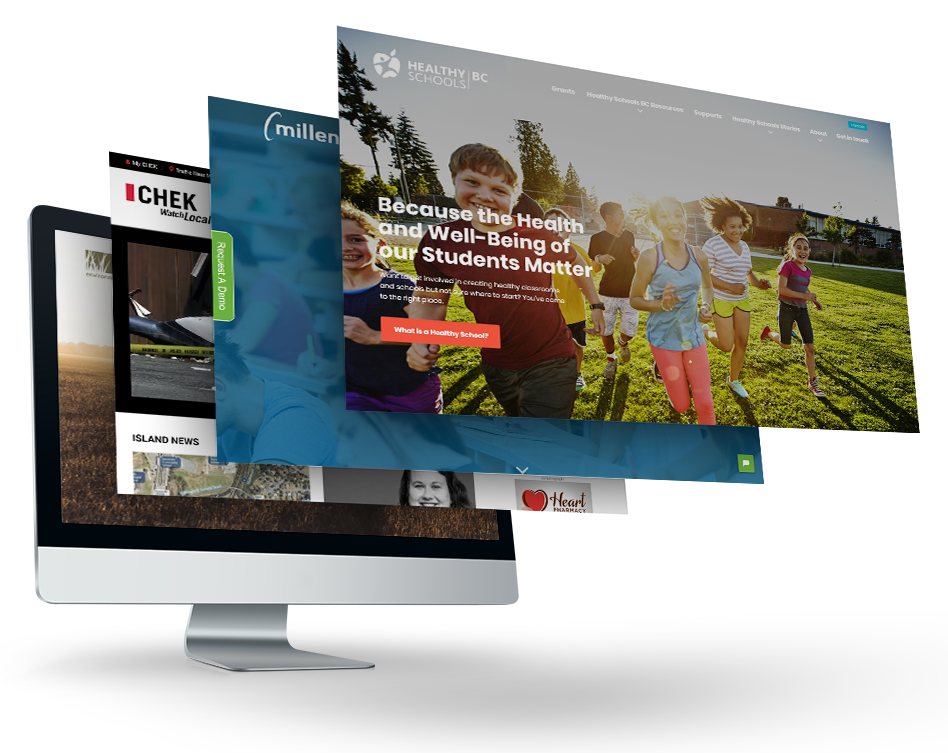Necessary Tips for Crafting High-Impact Internet Site Styles
In the realm of electronic marketing, the design of a site offers as an important touchpoint for engaging potential customers. To create high-impact site styles, one should take into consideration crucial components such as audience understanding, individual experience, and visual pecking order.
Understand Your Audience
Comprehending your target market is essential to reliable website style. A web site that resonates with its visitors is usually the outcome of detailed study and insights into individual preferences, actions, and demographics. Determining target users allows developers to tailor web content, visuals, and performances that meet their specific demands, boosting interaction and complete satisfaction.
To efficiently recognize your audience, start by carrying out demographic analyses to gather information on age, sex, area, and interests. This information functions as a structure for developing user identities, which represent the vital characteristics of your target market. These personas overview decision-making in design elements and material technique, making certain positioning with individual expectations.
Additionally, evaluating customer behavior through devices like Google Analytics can reveal exactly how site visitors interact with your website. Metrics such as bounce prices and time on web page can highlight locations that require improvement or adjustment. Individual surveys and responses also provide invaluable understandings into preferences and discomfort points.
Inevitably, a deep understanding of your audience is not merely helpful however necessary. It encourages designers to develop more relevant, appealing, and practical internet sites that promote a positive user experience and drive wanted end results.
Prioritize User Experience
When designing a web site, focusing on user experience (UX) is extremely important to attaining both individual fulfillment and service purposes. A well-crafted UX ensures that site visitors can navigate the site effortlessly, discover the information they require, and engage with content effectively. To achieve this, it is crucial to embrace a user-centered design strategy that entails understanding customer requires, choices, and actions.
Begin by conducting complete research, including user surveys and usability testing, to collect insights into exactly how individuals engage with your site. This data should notify design choices, making sure that features and designs align with user assumptions. Streamlined navigating is essential; visitors need to have the ability to situate information quickly without unneeded clicks or complication.

Last but not least, make certain that your internet site is easily accessible to all customers, including those with specials needs. Adhering to access criteria not just widens your audience but additionally promotes inclusivity. By prioritizing UX, you lay the structure for an effective website that meets both customer requires and business objectives.
Embrace Visual Pecking Order
A well-structured aesthetic power structure plays a substantial duty in enhancing customer experience by directing visitors' attention to the most crucial components of a web site. By purposefully preparing content, developers can create a clear path for individuals to adhere to, guaranteeing they involve with important details effectively.

Additionally, the placement of aspects on the web page is vital. Leading the visitor's stare via the design can be attained by placing important information at the top or in the center, where individuals normally begin their visual trip. Incorporating whitespace around elements can additionally enhance quality, making it easier for users to process details without feeling overwhelmed.
Lastly, employing typography effectively adds to visual hierarchy. Different font weights, designs, and sizes can denote importance, guiding users via the material flawlessly. By welcoming these principles, developers can develop an user-friendly experience that fosters engagement and urges customers to discover additionally.
Enhance for Mobile
Mobile optimization is crucial in today's digital landscape, as a significant portion of web website traffic originates from smart phones. To ensure a seamless user experience, web sites should be made with mobile individuals in mind. This involves employing receptive internet layout methods that adapt the layout, images, and message to fit various display sizes while preserving capability and aesthetics.
First, prioritize loading rate, as mobile individuals often operate slower networks. Decrease and enhance pictures code to enhance efficiency. Additionally, navigation must be user-friendly; think about carrying out a streamlined menu that allows very easy access to necessary web pages without overwhelming individuals.
Touch targets, such as buttons and links, need to be appropriately sized, guaranteeing they are easily tappable without errors. In addition, ensure that kinds are mobile-friendly by minimizing input areas and utilizing dropdowns where appropriate, enhancing the user experience.
Finally, test your web site throughout different mobile phones and web browsers to determine any kind of you could try this out issues that may influence functionality. By prioritizing mobile optimization, you not only boost user satisfaction however additionally positively impact your site's internet search engine position, hence drawing in more visitors and enhancing total involvement.
Implement Solid Branding
Producing a well-known and cohesive brand is essential to establishing a strong on-line presence. A well-defined brand name not just separates you from rivals yet additionally promotes trust fund and commitment among your audience. To implement solid branding, begin by creating a clear brand identification that encapsulates your goal, values, and vision - website design copyright. This identification must be mirrored constantly throughout all digital touchpoints, including your internet site, social media sites, and e-mail communications.
Aesthetic aspects such as logos, shade systems, and typography play an essential duty in branding. Choose a shade palette that read more reverberates with your target audience and reflects your brand name individuality. Make certain that your logo design is functional and prominently displayed on your internet site, improving brand name recognition.
Material is equally important; your tone of voice must line up with your brand identification, whether it's professional, friendly, or reliable. Involving narration can better strengthen your brand name, creating a psychological connection with individuals.
Verdict
In final thought, crafting high-impact web site layouts necessitates a diverse technique that includes recognizing the target market, prioritizing individual experience, and accepting visual pecking order. Optimization for mobile devices continues to be essential, together with the execution of strong branding strategies. By integrating these components, web sites can efficiently involve customers, promote smooth navigating, and foster psychological links that improve brand name identity. Ultimately, adherence to these concepts contributes to the production of compelling and reliable digital experiences that resonate with target market.
To create high-impact web site designs, one must think you could try these out about crucial components such as audience understanding, individual experience, and aesthetic pecking order.When designing a web site, focusing on individual experience (UX) is critical to achieving both individual contentment and business purposes.Beginning by carrying out detailed study, including user studies and usability testing, to gather insights into how customers communicate with your site. To make sure a seamless customer experience, sites must be made with mobile users in mind.In conclusion, crafting high-impact website layouts demands a complex technique that incorporates comprehending the target market, focusing on individual experience, and accepting visual pecking order.